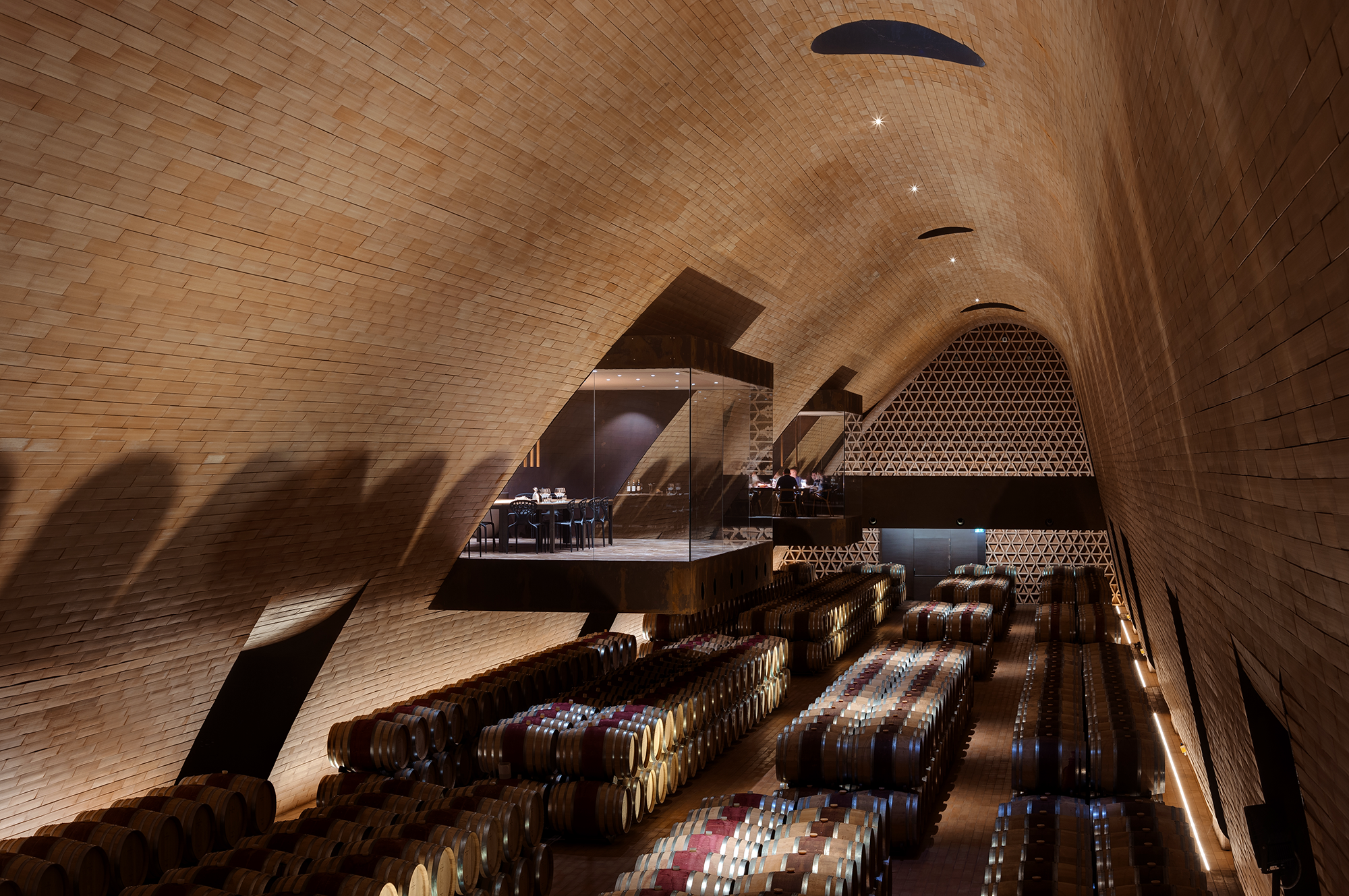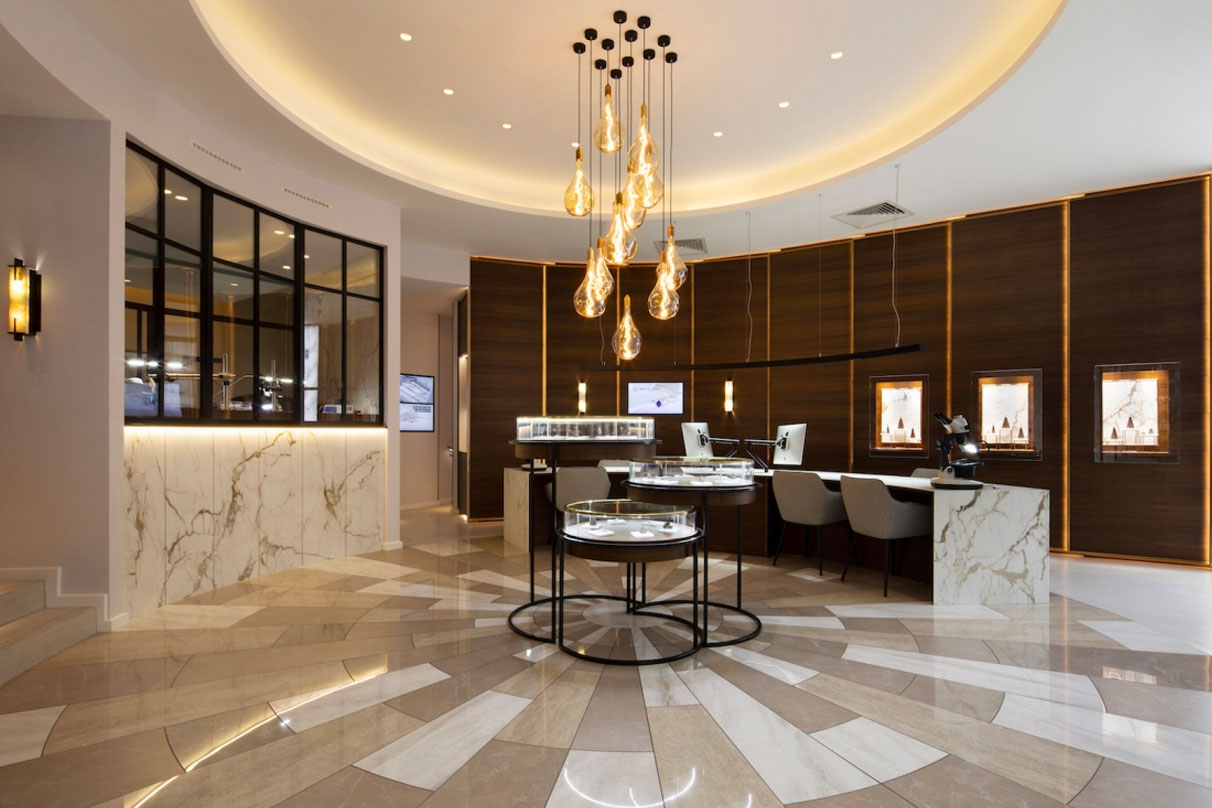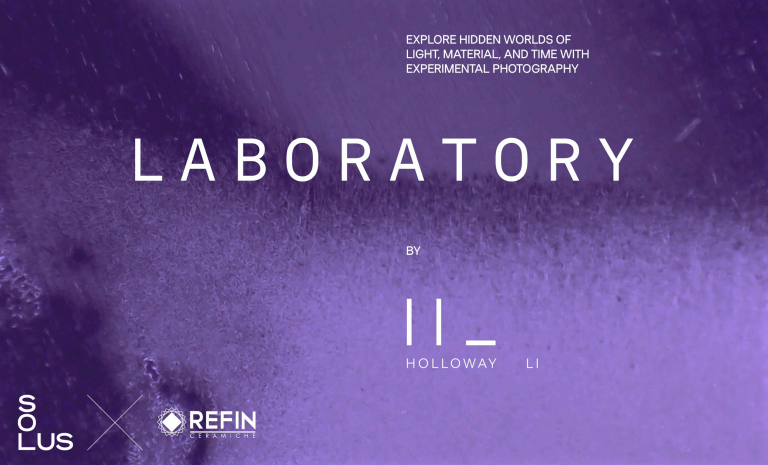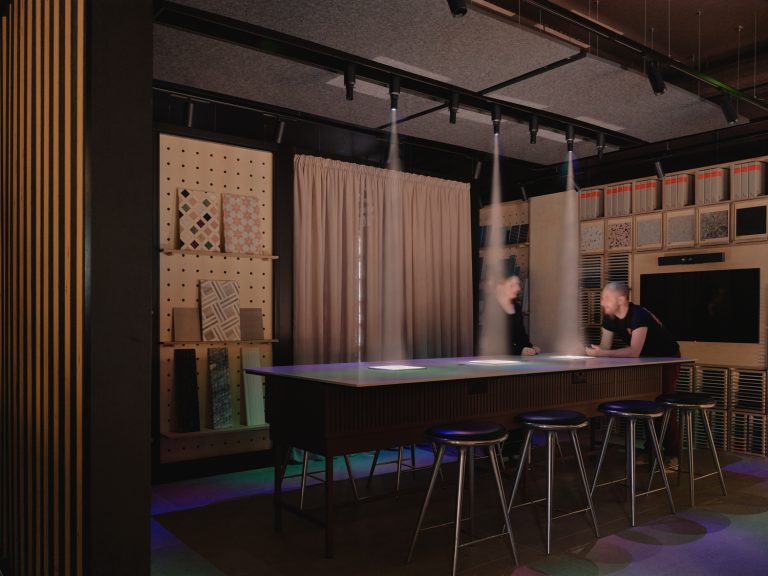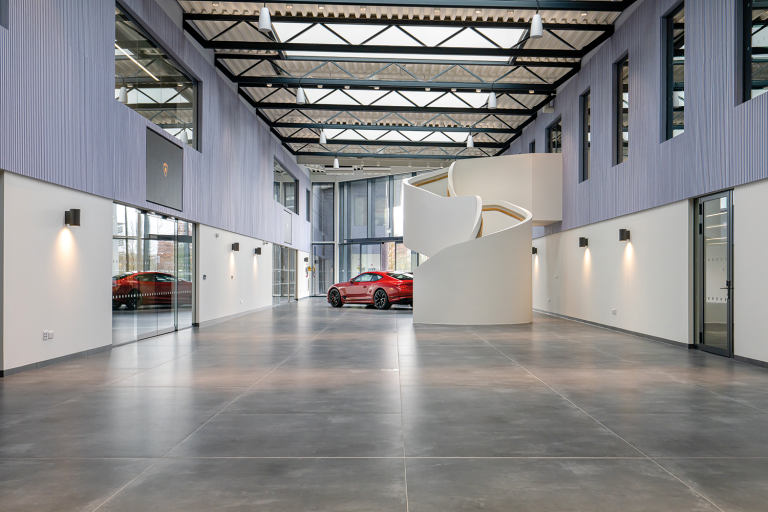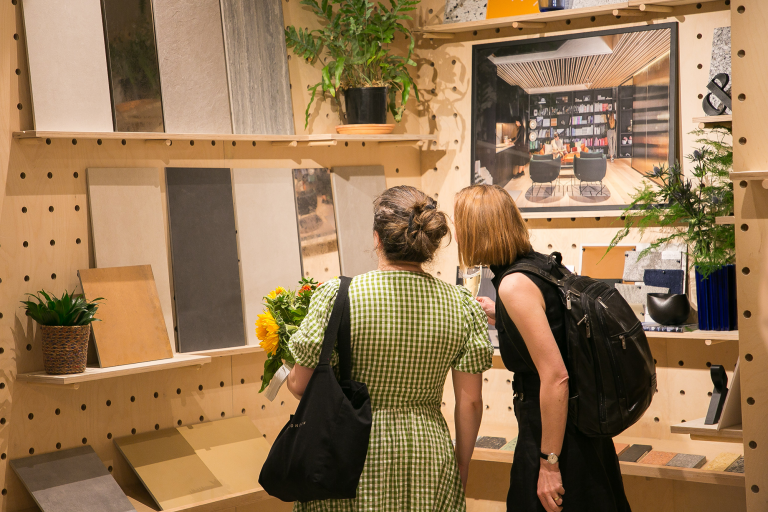The Antinori Winery sits a few miles outside Florence, inside a hill beside the village of Bargino in Chianti. It is invisible from the road: just another verdant Tuscan hill, striped with vines, sparkling in the sunlight. But then, a deep cut banked with terracotta-coloured concrete takes you into the hillside, to a liminal space of light and shadow. A Corten spiral staircase, its shape evocative of poured wine swirling in a glass, leads to a broad terrace: half-shaded by the structure in the hillside and half-bright with the Tuscan sky. Glass doors give access to the underhill and, deeper in, two monumental wood and iron doors slide apart to reveal the inner sanctum: the Temple of Wine.
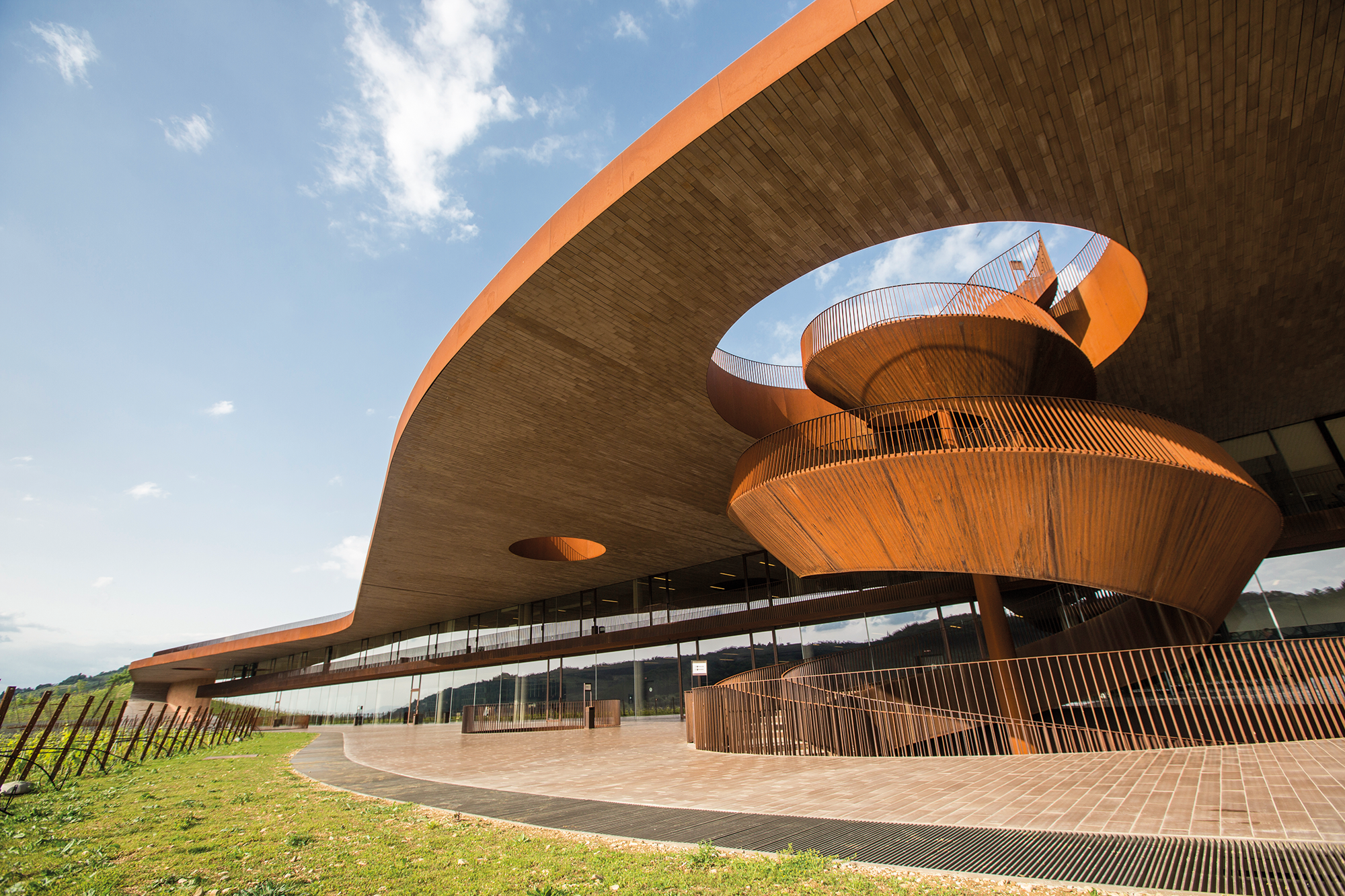
Cotto Manetti and the Antinori Winery; a tale of terracotta and wine
14th March 2023
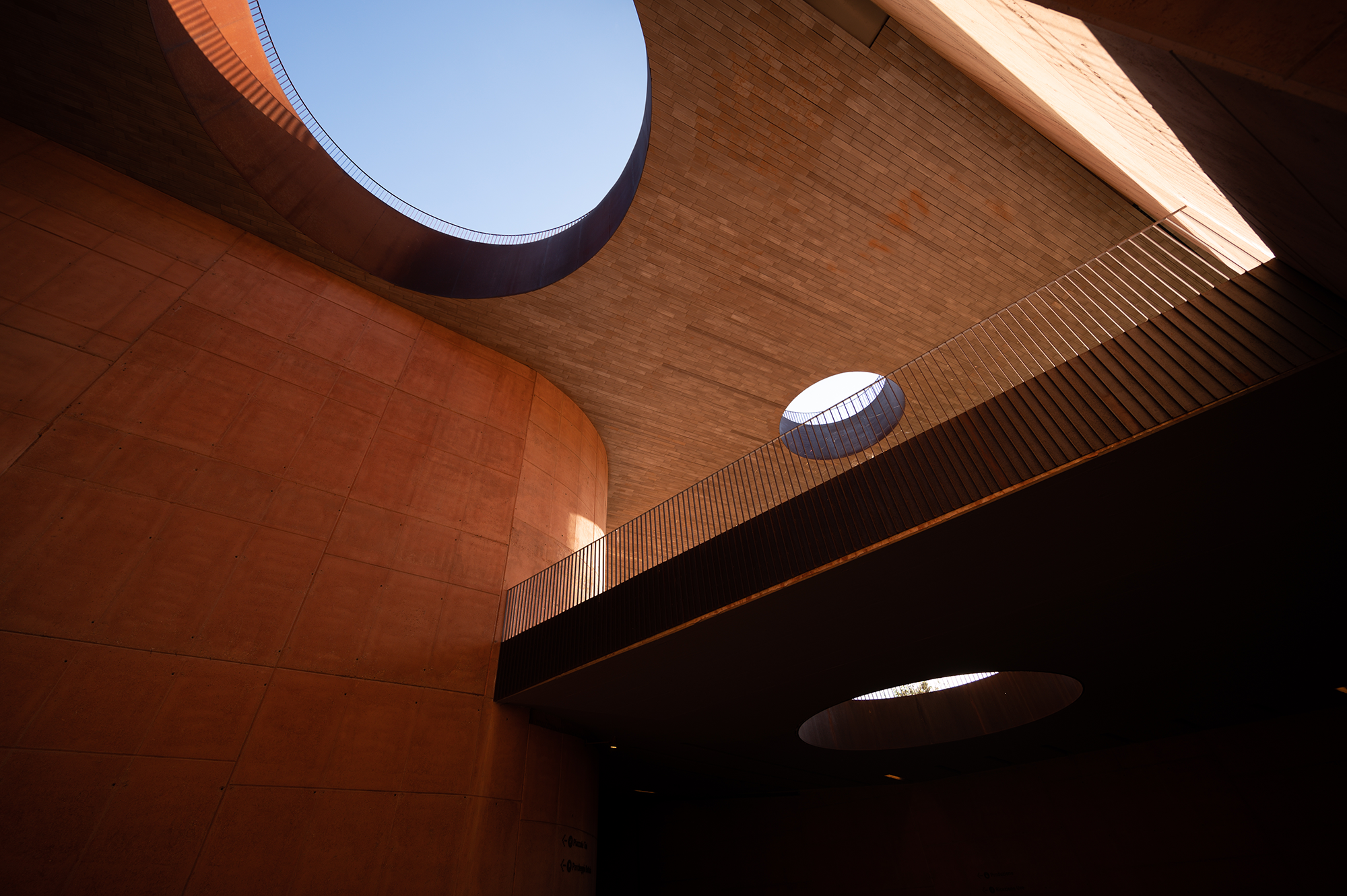
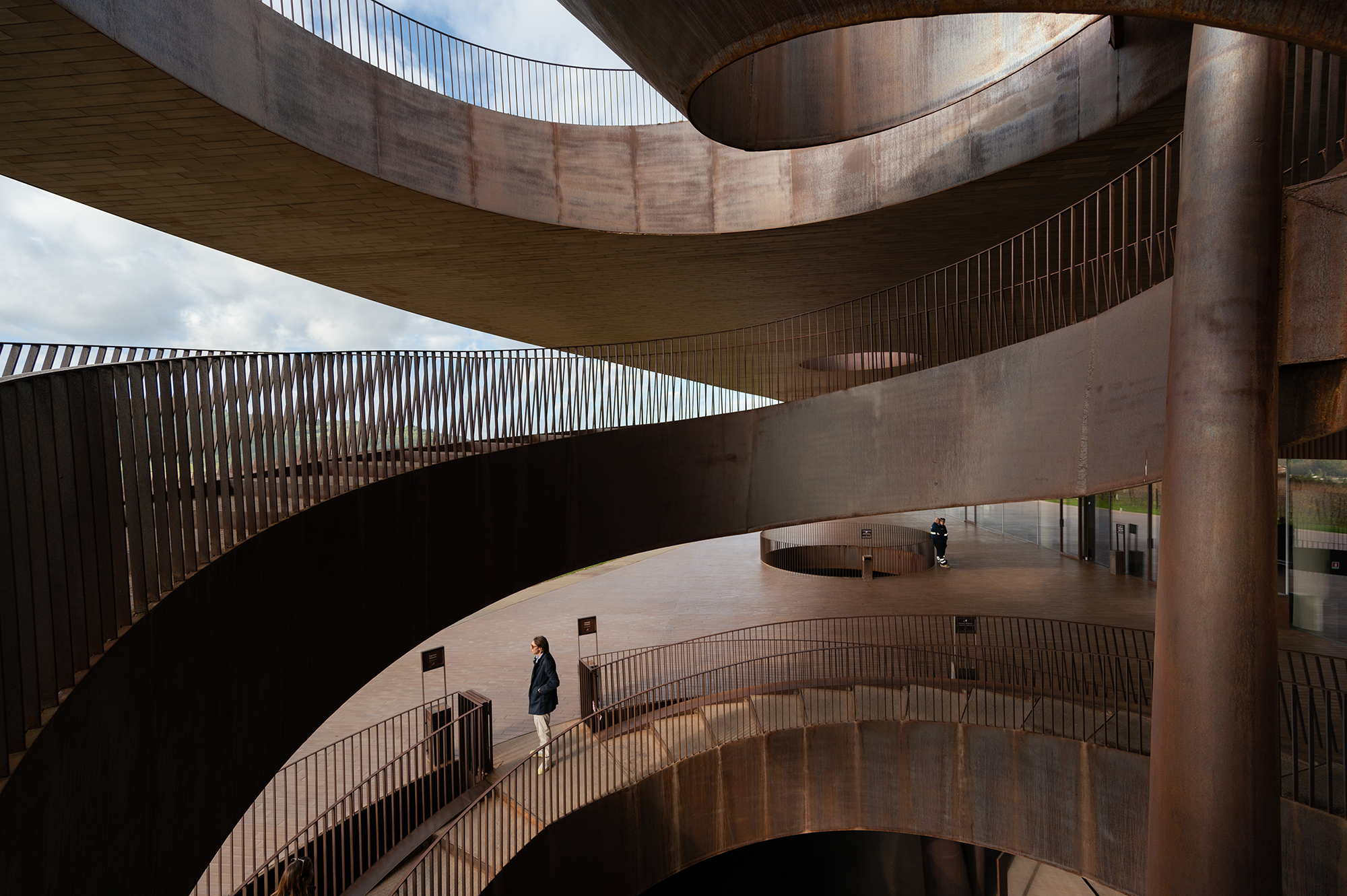
Conceived by the Florentine practice, Archea Associati, the Antinori Winery is a functioning winery and the headquarters of a global company. It has a visitors’ centre, a museum, a multi-media room, private dining and tasting rooms, an olive oil press, and a world-class restaurant. The winery employs a technique called ‘gravity-flow vinification’. Harvested grapes arrive at the top of the building-in-the-hill and are transferred to a vibrating hopper; this destems the grapes while keeping the fruit intact. A gentle pressing allows the must and skins to drop through a steel conduit into the tanks on the floor below.
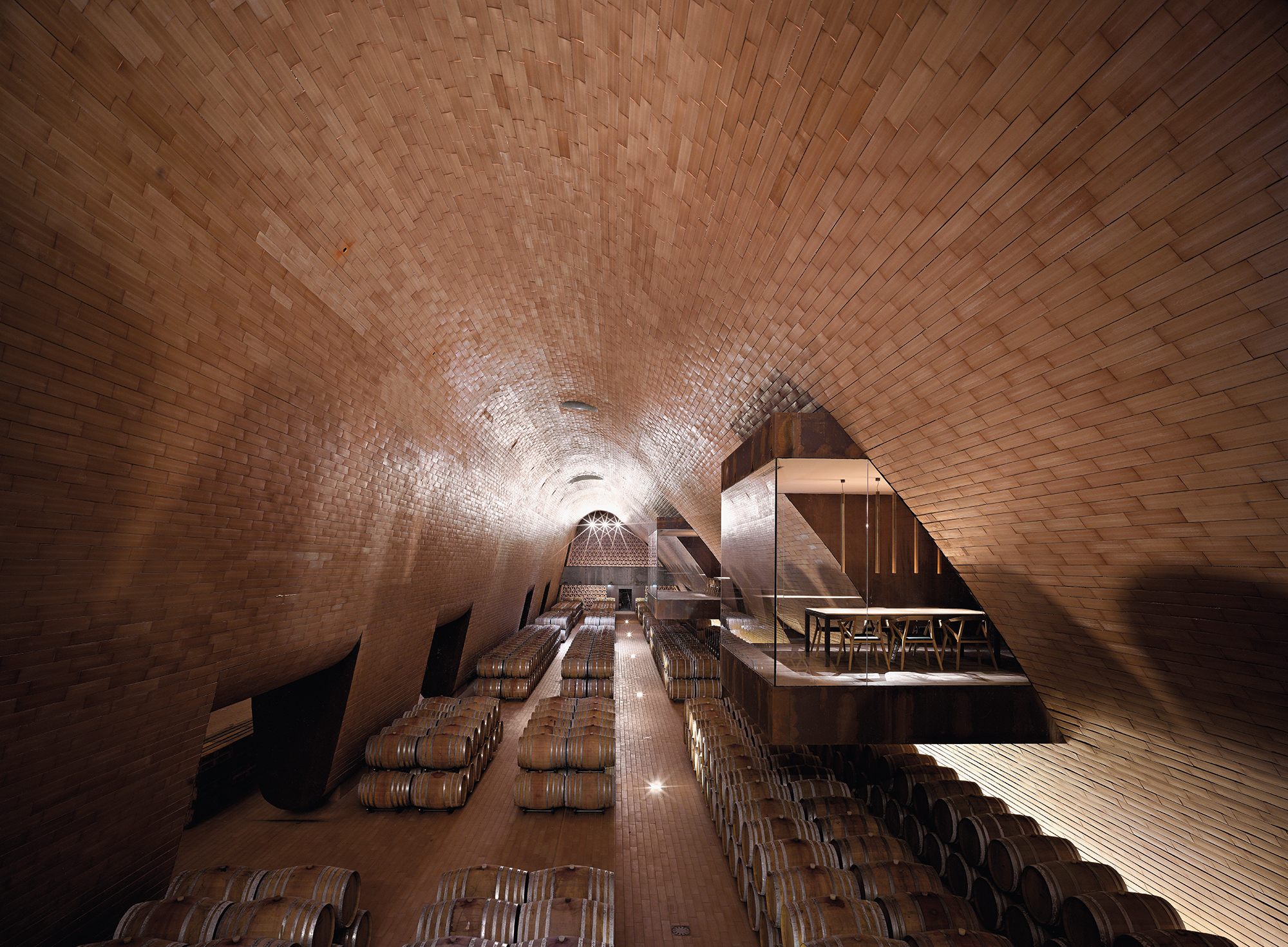
The fruit falls through the hill, is transformed into wine, and comes to rest in the barrique room. This large, long, vaulted space is populated with stacked oak barrels in double rows. The walls of the vault are faced with terracotta and curve smoothly upward to an apex. The height and curvature of the walls render the environment passively dynamic, and the unique technical behaviour – specifically the microporosity – of the terracotta allows the air to circulate. This creates a microclimate that enables the wine to breathe correctly. It is quiet here, in the deepest and innermost part of the building, shielded from sunlight and rapid changes in temperature. The space has a mystical, sacred feeling: apt for the creation of Sangiovese, the blood of the god Jove (Sangius Jovis).
We are visiting this remarkable place with Federico Manetti, whose family owns the factory that produced the terracotta used on floors and walls throughout the winery. The same earth that gives the finest wines in the world, gives the best terracotta. Galestro is a porous grey rock that is found in the top tier of the soil in Tuscany. When it is exposed to sunlight and air, it tends to break down resulting in well-drained land, which is perfect for growing grapes. When mixed into clay and fired, the resulting terracotta acquires unique characteristics of colour, resistance, and strength. Federico’s family have been making cotto, as terracotta is called here, since 1780. They supply terracotta to the organisations responsible for the upkeep of the Duomo di Firenze, the Galleria dell’Accademia, the Galleria degli Uffizi, and the Basilica di Santa Croce.
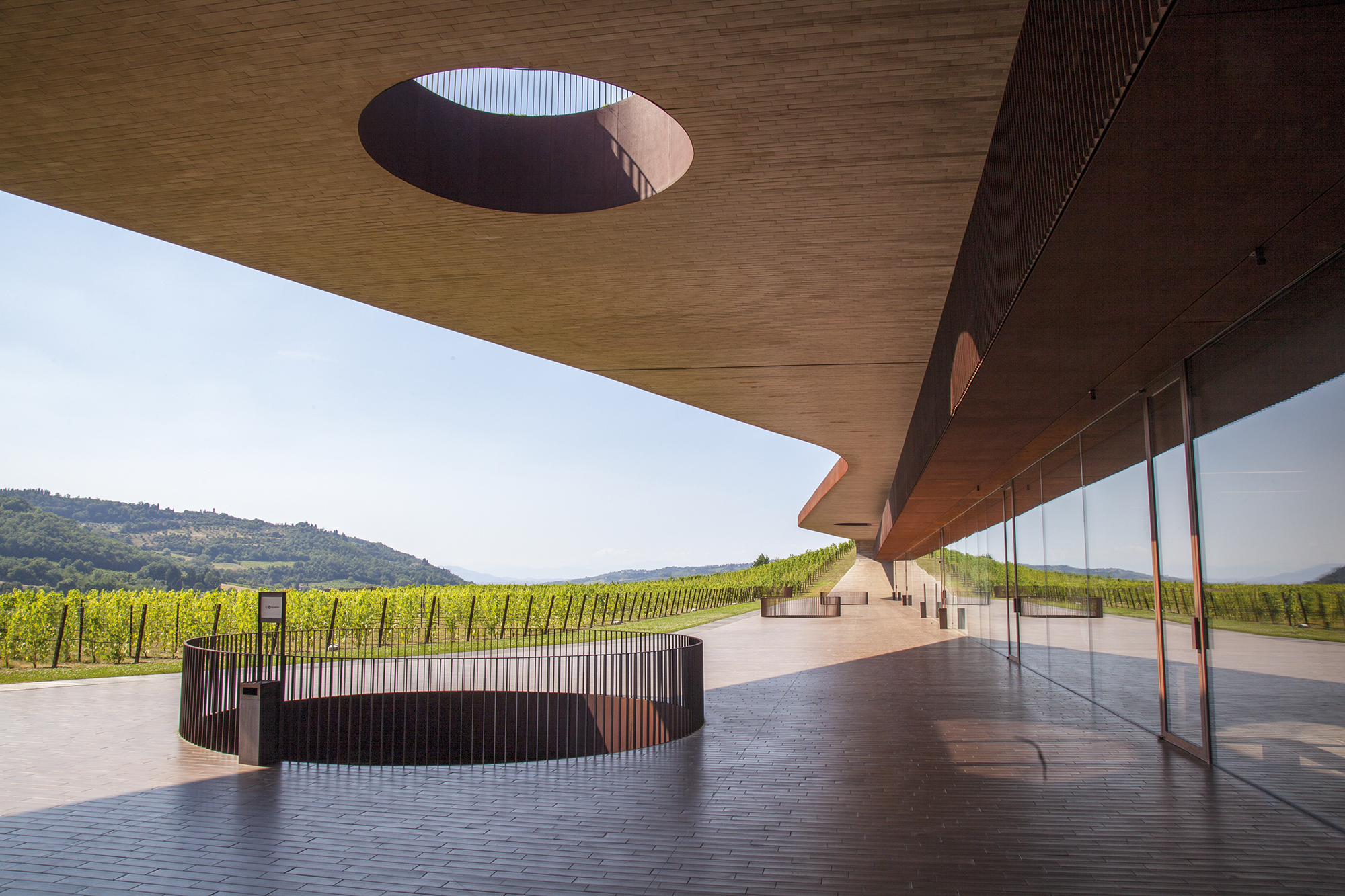
The Manetti can claim a long ancestry but are not consumed by their past. Rather they look to the future while maintaining their connection to their history. In 1964, they branched out into winemaking when they bought the Fontodi estate which now produces award-winning wines. More recently, they acquired a neighbouring factory that produces handmade terracotta furniture favoured by designers in Australia. They also produce huge amphorae, popular all over the world but particularly in Georgia and Armenia where they are buried into the floors of houses to store oil and wine – a very ancient practice.
When we visit the Manetti factory, we see an artisan making an amphora using the based-work technique where the potter moves around the clay on a raised circular wooden step. Minus the roll-up cigarette, it’s a scene that could have come from 50 BC. Next-door we see a special run of branded terracotta pieces for the Fendi headquarters in Milan. There are supplies for projects in Helsinki, Washington DC, Hobart, Shanghai. Federico explains “We’re a small operation, but we’re very agile and productive. We’ve been operating at a high level for a long time.” This ability to hold onto the valuable parts of their legacy while adapting to new demands from the market explains their longevity.
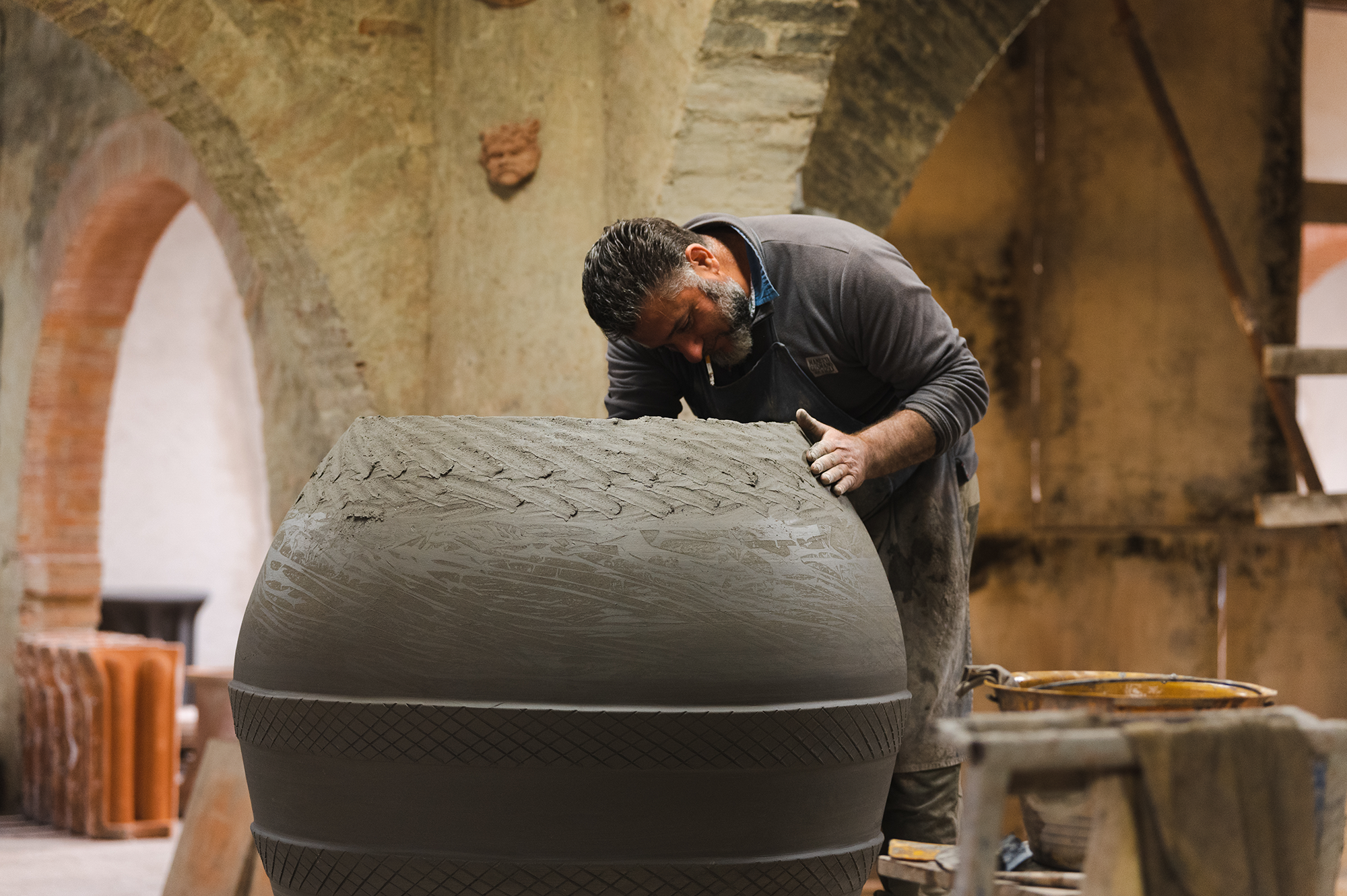
Longevity is a theme on this visit. Federico takes us to lunch at the Antinori Winery restaurant, Rinuccio 1180. Rinuccio is the name of the first recorded winemaker in the family, and 1180 was the year in which they began.
The official start of the Antinori winemaking business is 1385, when Giovanni di Piero Antinori was enrolled in the Florentine Guild of Winemakers. This makes Marchesi Antinori Srl. the 10th oldest family-run company in the world. And because the Tuscan earth gave us, not only clay and wine, but also the first flowers of the Renaissance, it is not inconceivable that Antinori wine refreshed Brunelleschi when he was building his Duomo, Dante as he composed his Commedia, or Michelangelo as he helped David emerge from a block of Carrara.
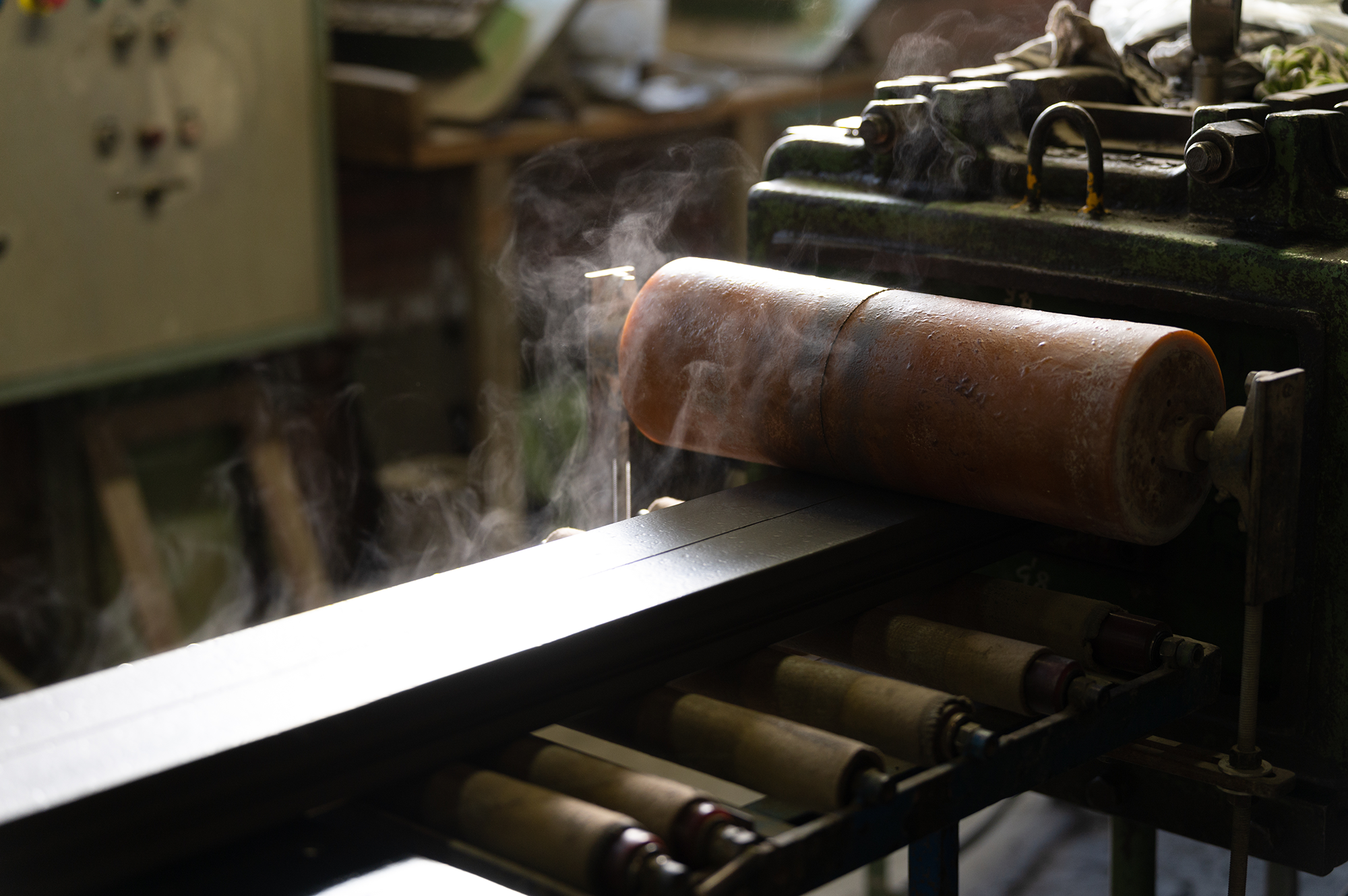
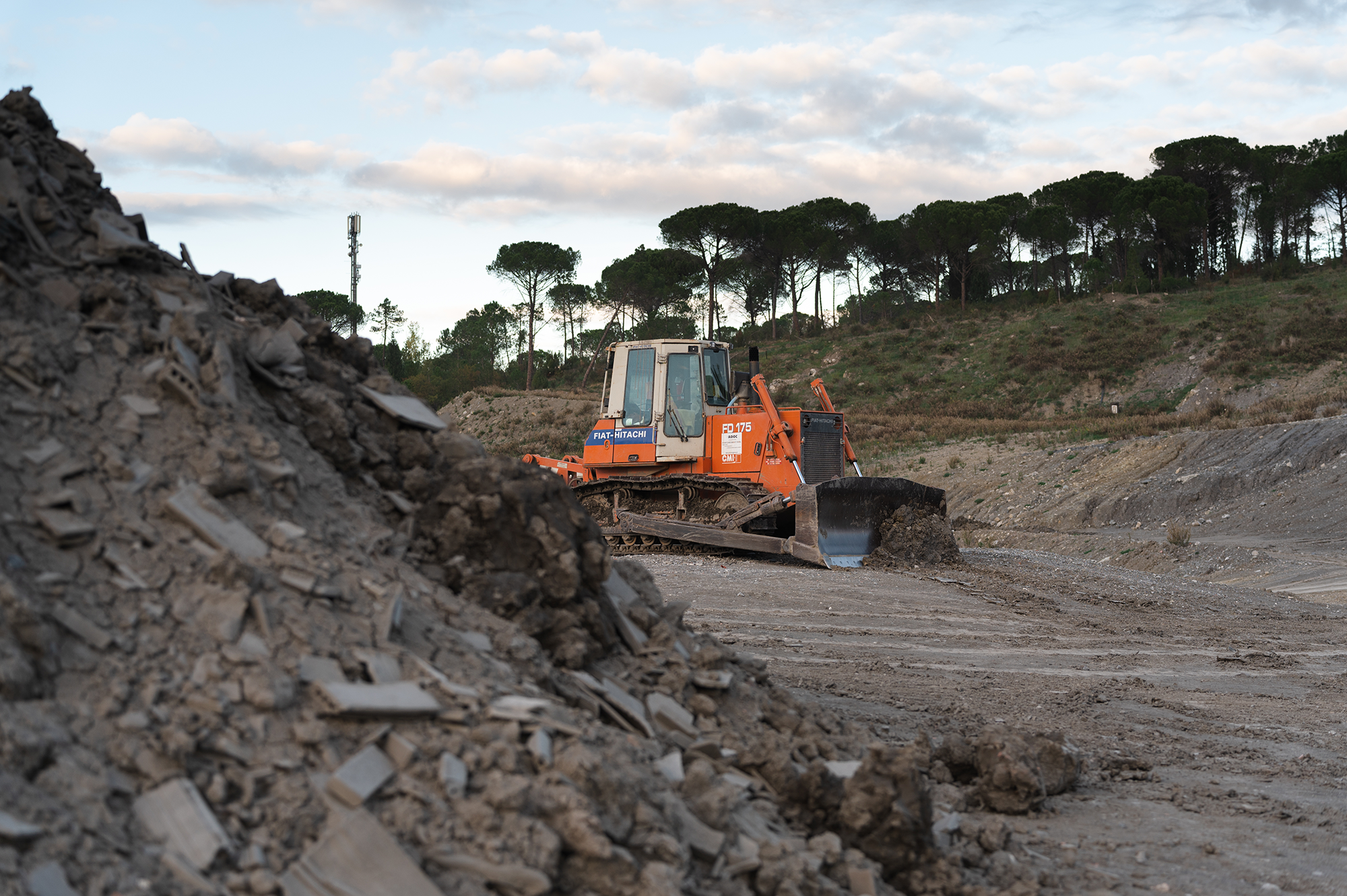
Federico explains that the current head of the family, Marchesi Piero Antinori, perceived the need for a new winery in response to the success and growth of the business. The historical Marchesi Antinori wineries in San Casciano were not large enough to meet demand. The Palazzo Antinori in the centre of Florence where the Antinori have run their business for centuries – dining with high prelates, generals, and crowned heads, deciding the politics of Florence and the trade routes of Europe – had become too small to support a global operation. Alongside the practical, there was the desire to forge a legacy, to create a Temple of Wine that would honour the land, the wine, and the people that make it.
Lead Architect on the winery project, Marco Casamonti, writes, “This is…the desire of a customer conscious of owing his fortune and success to the land and to the fruits of a nature that is not wild, but ably guided by the hand of Man, by his culture and knowledge about treating, blending, waiting with great patience and respect for the process of fermentation and vinification to be complete. From this point of view, the fact that the building is covered by earth does not represent an attempt…to conceal the winery and confuse it with the vineyards…Rather, it aims to convey the deeper and more convinced search for a sense of equilibrium with the environment represented by the opening of the very hill in order to house in its womb – in “mother earth” – activities and actions capable of generating that union between nature and man-made, of which wine, as a product, is the most perfect and accomplished synthesis.”
With our feet resting on Cotto Manetti, a glass of Tignanello in hand, a plate of food to share, we talk about clay, roots, rock, vines, time, and deep time. The roots of the vine that gave us the wine drew sustenance from the same clay that makes the terracotta beneath our feet. The wine, vibrant in the glass, also comes to us from a long prosperity won by political sagacity, generations of viticultural learning, and a profound apprehension of terroir. The terracotta, firm and warm, comes from clay enriched by metamorphic rock, formed deep beneath the Earth’s surface long ago. Both commodities are born of the fertile earth and underpin the prosperity of this whole region: a prosperity which nurtured the Early Renaissance, the cultural rebirth that emphasised reason, scientific investigation, and the wonder of human potential; ideas and values that continue to shape our world today.
